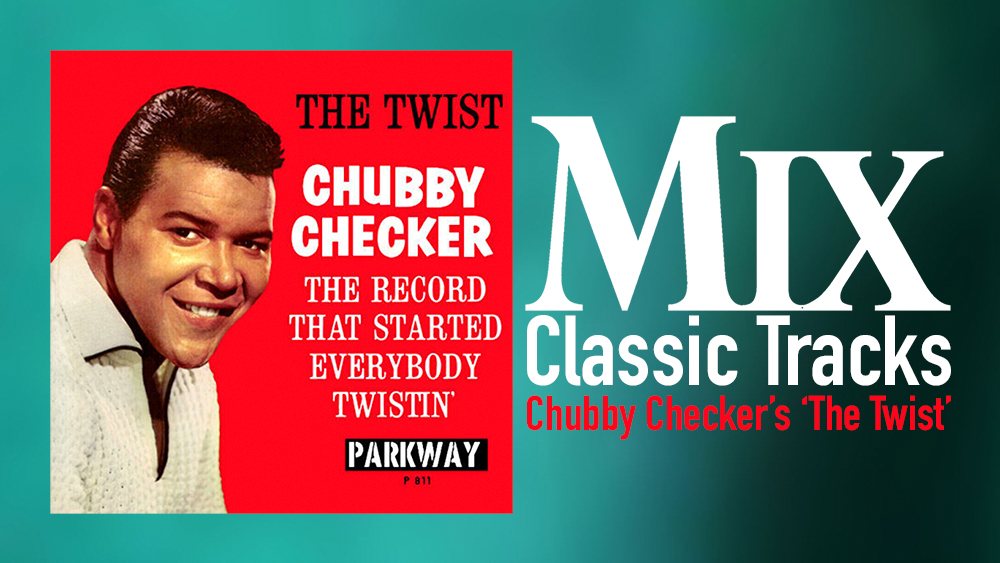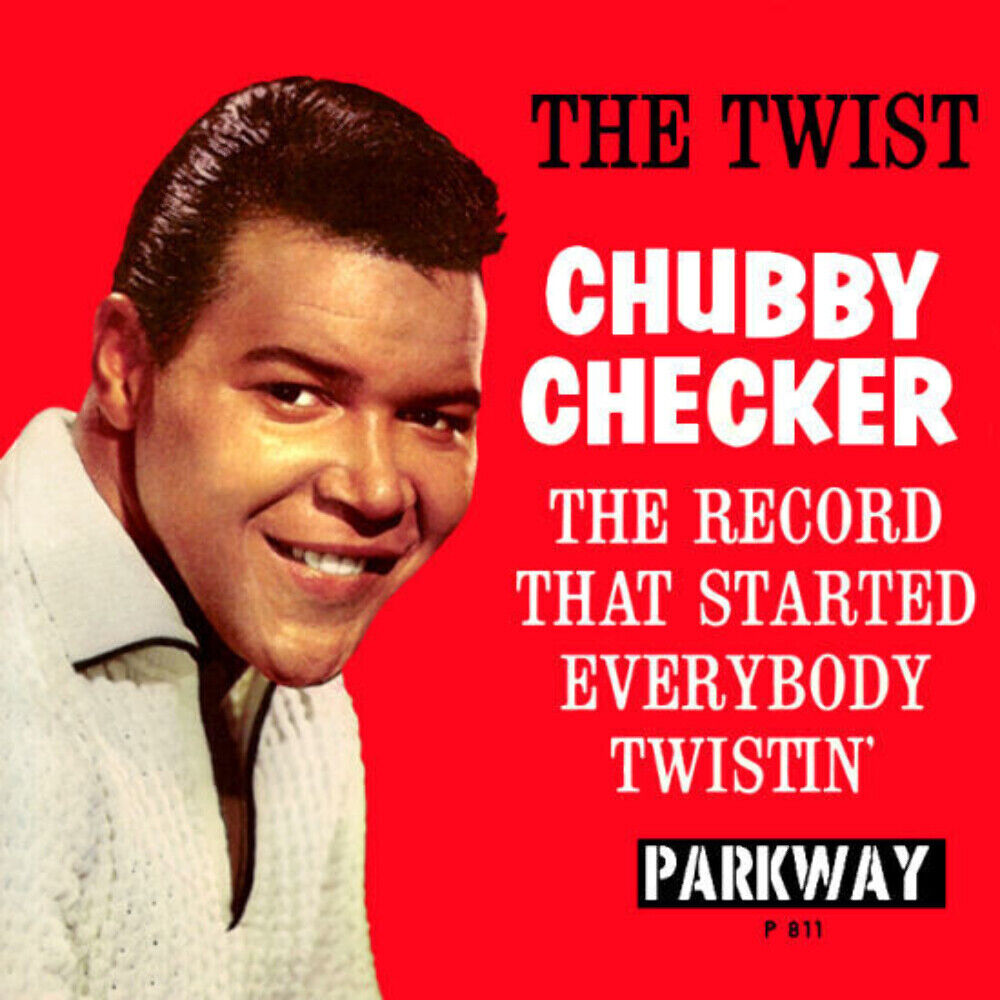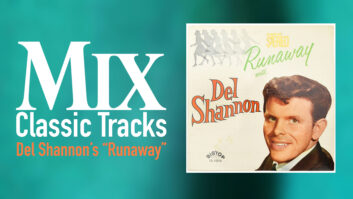
As a certified dinosaur, I wish I could claim that my first hit of rock ‘n’ roll was seeing Elvis on The Ed Sullivan Show in 1956. But I was only 3 then (and living in Italy, no less), so my first dose of digging rock actually came three years later when, through my older brother, I discovered the Philadelphia “teen idol” sound of Bobby Rydell, followed in close succession by Chubby Checker, The Dovells, Dee Dee Sharp and various non-Philly hit-makers, from Bobby Darin to The Shirelles. Okay, in retrospect it doesn’t seem like the hippest music on the planet, but it’s what was on AM radio and what my friends listened to; I make no apologies. Dark secret Number 2: At the age of 8, I used to comb my hair into a Rydell pompadour. (Now I need to call his toupee-maker!) Anyway, the point of this meandering autobiography is to stress that covering Checker in “Classic Tracks” is a big deal to me — this was some of the music I loved most as a youth.
Of course, anyone who knows their rock history is aware that “The Twist” cannot begin at Cameo-Parkway’s Philly studio, because the Chubby Checker 1960 hit was actually a cover tune. The song was written by and originally recorded by Hank Ballard in 1959 as the B-side to a rather drippy ballad called “Teardrops on Your Letter.” Ballard got his start as a singer in his native Detroit during the early ’50s. His first widespread exposure came as a member of a group called The Royals, who changed their name to The Midnighters when Ballard became lead singer, and scored a succession of R&B hits beginning in 1954 with the suggestive “Work With Me Annie,” “Sexy Ways,” “Annie Had a Baby” and “It’s Love Baby (24 Hours a Day),” all for the Federal label. A number of The Midnighters’ tunes were banned by radio for being too risqué, but, of course, that was also part of the group’s appeal and what made them a popular attraction on the club circuit in the mid- to late ’50s.
By the time “Teardrops” came out, the group had become known as Hank Ballard & The Midnighters and were recording for King Records. “Teardrops” was a sizable hit (making it to Number 4 on the R&B charts), and the flip-side, “The Twist,” also generated some interest; it landed at Number 16 R&B. Ballard later recounted that he was inspired to write “The Twist” by watching some of The Midnighters’ dance motions as they sang — sometimes it seemed like they were stamping out a cigarette as they twisted their bodies and sang their backups. Others have noted that Ballard purloined the melody of his own earlier song, “Is Your Love for Real,” when he wrote “The Twist”; certainly, he wasn’t the first (or last) to do that.
Now, let’s move on to Philadelphia. The City of Brotherly Love became a major player in the burgeoning world of rock ‘n’ roll in the late ’50s and early ’60s, mostly because of one man: Dick Clark. Clark had moved to the city in 1952 to be a DJ at WFIL, which also had a TV outlet that aired a daily music and dance program called Bob Horn’s Bandstand. Clark occasionally substituted for Horn on the show, and by 1956 had taken over hosting duties. Already regionally popular, in 1957 the show went national, airing weekday afternoons on ABC as American Bandstand. It caused an immediate sensation, becoming the place for teenagers across America to see singers lip-synch their latest singles and watch their peers (Philly teens all) dance to other pop records.
As a major city but only a second-tier market, Philadelphia had relatively few recording studios — New York was unquestionably the center of the music business at the time. Still, there were a few small rooms and local record labels located there. Cameo Records was started at 1405 Locust St. in 1956 by bandleader/producer Bernie Lowe and lyricist Kal Mann. The label had its first smash a year later with Charlie Grace’s Number One single “Butterfly” (written by Mann and Lowe). Shortly after opening, Lowe hired Dave Appell to work with acts, lead the house band and run the label’s small studio. Appell was already well-established in the music business, having worked as an arranger for Jimmie Lunceford, Benny Carter, Earl Hines and others, and once at Cameo he even had a few instrumental hits of his own (as Dave Appell & The Applejacks), including “The Mexican Hat Twist” and “Rocka-Conga.” He also became Mann’s main songwriting partner, and together they churned out a multitude of big hits for Cameo and (beginning in 1958) Parkway acts.
Reached by phone, the 84-year-old Appell recalls, “I had no background of working in the studio at all; I learned the hard way — on the job. The first date I did, I had the fellow who built the board come in and he showed me a few things. He says, ‘See that needle? Get that up around the red area and you won’t have to worry about anything else.’ I was recording three saxes and a rhythm section — seven guys. ‘Great, that’s your first lesson!’” Cameo’s tiny room “didn’t have anything high-tech,” Appell relates. “It was a small mono board and we went mono to mono [bouncing] — we had two mono machines. And because the studio was so small, for the vocals we went to another Philly studio called Reco-Art, on 12th Street, which was owned by a guy named Emil Korsen. Sound-wise, it was one of the better ones around; it even had an echo chamber. Later, Joe Tarsia, who worked with us at Cameo, bought the studio from Emil and that’s where he started Sigma Sound.”
Between them, Appell, Lowe and Mann knew all the best musicians in Philadelphia (some of them were already playing part-time in the Applejacks), so assembling a house band for the Cameo and Parkway labels was no sweat — indeed, most of the hits that came out of the label featured the same musicians, with occasional variations. The big, honking tenor sax sound was usually courtesy of either Buddy Savitt (who played with Woody Herman and others) and/or George Young (who achieved greater fame after his Cameo period); Dan Dailey played bari sax; Appell and/or Joe Renzetti played guitar; Joe Macho was often the bassist; keyboards (mostly piano during this era) were handled by Roy Stragis or Fred Bender; and on drums was either Bobby Gregg or Ellis Tollin, who played with the great Clifford Brown and is also credited with co-designing Rogers Drums’ “Dyna-Sonic” snare with Buddy Rich and a couple of others.
Tarsia, who came onboard as a tech assistant to Appell in mid-1961 after having worked in electronics for Philco and doing repair work at various Philly studios, recalls that the musicians were a tight-knit group “who could play anything and pretty much nail it immediately. They were [sight] readers and professional musicians and most of this stuff was easy for them — they’d all played jazz! The typical date was you booked three hours, you went in with four charts, and if you were lucky and you had 20 minutes left, you try to get the fourth tune. It was all live, of course; there was no fixing it in the mix. You might do five or six takes of a song, but if you’re doing another take, it’s probably for feel and not because someone hit the wrong note. Today, a three-hour session gets you a bass drum sound! But in those days, everyone sat down and you played — boom! The downbeat was when the clock struck three, and at six the guys were putting their instruments back in their cases.”
As for miking, “Typically, we’d have one on the piano, two on the drums [bass and overhead], one on guitars, one for the saxes,” Tarsia says. “We had one good Telefunken mic and the rest were probably Electro-Voices and Shures. A mic I used from day one on snare drums was the E-V 633, which was incredibly durable — you could use it as a hammer!” Appell also notes that in the early days at Cameo-Parkway they had a few RCA mics.

Background setting established, we can now introduce Ernest Evans. Born in South Carolina but raised in south Philadelphia, Evans was working as a chicken plucker at a store called Fresh Farm Poultry after school during his teenage years and would occasionally entertain customers at the store by telling jokes and doing imitations of popular singers of the day, including Fats Domino, Elvis Presley and The Coasters. According to Appell, “Chubby” Evans would also hang out at the Cameo-Parkway studio “and we were always kicking him out. A nice kid, but…” Evans’ break came when he got to record some of his impersonations for Dick Clark for an audio Christmas card he sent out. It was Clark’s wife, Barbara, who gave Evans the second half of his stage name, a humorous knock-off of Fats Domino, of course. The novelty idea was then picked up by Parkway Records in 1959 and came out as Checker’s first single, “The Class,” which made it as high as Number 38 on national charts.
The 18-year-old Evans/Checker was an appealing and decidedly non-threatening African-American lad, prefect for American Bandstand it turned out. Around the time “The Class” was hitting the airwaves, Ballard’s “Teardops…” backed with “The Twist” was doing well on the R&B charts. The story goes that because of Ballard’s reputation as a singer of suggestive songs, American Bandstand was reluctant to book him. It was Clark’s idea to then re-record “The Twist” and have one of the acts on his own Swan Records labels — such as Danny & The Juniors — sing it. However, once “The Class” hit, Checker was tagged to sing on the already completed instrumental track, and he turned in an uncanny imitation of Ballard — so much so that when Ballard first heard it, he thought it was his own, and he later described Checker’s version as “a clone.” Buddy Savitt played the sax line, Ellis Tollin was the drummer — “he came up with that cymbal hit on the 2 and 4,” Appell says admiringly.
It took awhile for the song to catch on, but with plenty of AM radio and American Bandstand exposure, the record eventually soared to Number One in September 1960, knocking Presley’s lugubrious “It’s Now or Never” out of the top spot, launching Checker’s career into the stratosphere and igniting a dance craze that swept the world. The following year, Appell and Mann penned a wildly successful follow-up, “Let’s Twist Again,” which made it to Number 8 (Young played the sax solo on that one), and in the fall of 1961, Checker’s original of “The Twist” became the only song of the rock era to hit Number One after more than a year off the charts.
From 1960 through ’63, Checker cut what seemed like a million other dance songs, including “Pony Time” (Number One in ’61), “The Fly,” “Limbo Rock,” “Dance the Mess Around,” “Slow Twistin’” and that truly immortal number, “The Hucklebuck” — “You wiggle like a snake, you waddle like a duck/That’s what you do when you do The Hucklebuck!” Other Cameo-Parkway artists also cashed in on dance fads, too: The Dovells introduced “Bristol Stomp” (one of the all-time great songs of the era) and “Do the New Continental”; Bobby Rydell tried to get us to do “The Fish” and “The Cha-Cha-Cha”; and Orlons sang about “The Wah-Watusi.”
The success of these and other hits led to Cameo-Parkway building new studios in late 1961, with Tarsia helping build the homemade console out of Altec modules used for P.A. systems and purchasing a number of new, better mics. The glory days of the labels were to be relatively short-lived, however. In February 1964, The Beatles conquered America and the whole music world went kablooey! Self-contained bands that wrote their own songs came into vogue, the clean-cut look and sound of teen idols suddenly seemed like it belonged to another time, and within a couple of years, the way albums were recorded also changed dramatically. In some respects, the way Cameo-Parkway operated was sort of the last gasp of the ’50s way of doing things.
Appell left Cameo in 1964 and, believe it or not, is still working. Among his later successes are Tony Orlando & Dawn’s big records from the ’70s. Tarsia went on to become a primary architect of the Philadelphia sound of the ’70s (and beyond), working out of his own Sigma Studios with The O’Jays, The Spinners, The Stylistics and countless others — his is truly one of the great recording careers. Checker has cashed in big time on his early successes. Though essentially an “oldies” act from The Beatles era on, he’s made occasional forays onto the charts with this or that song (including a Top 20 rap version of “The Twist” with the Fat Boys in 1988) and manages to tour successfully year after year. In the late ’80s, he even headlined the Super Bowl half-time show. Not bad for a guy some consider a “one-hit wonder.”
This article was originally posted March 1, 2007.







